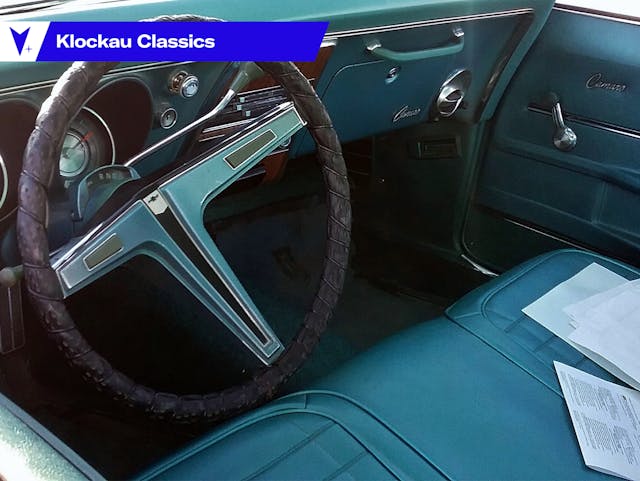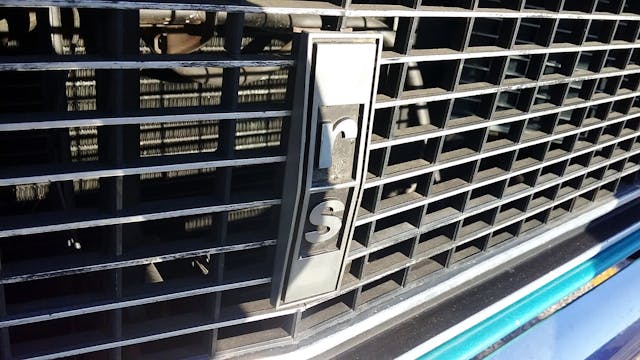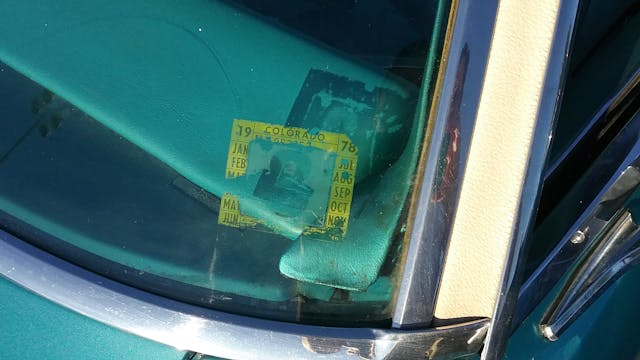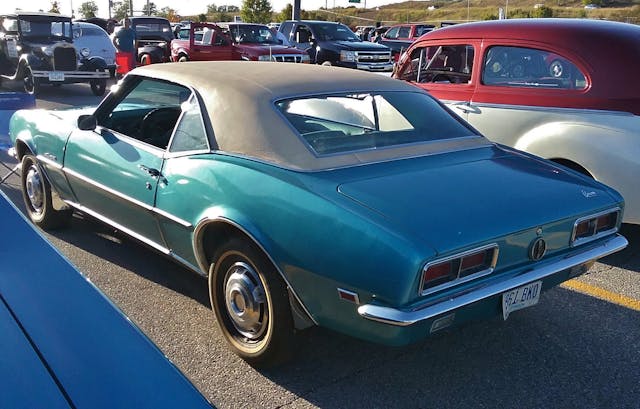1968 Chevrolet Camaro Rally Sport: Terrific in Tripoli Turquoise

“Oh no, ANOTHER Camaro post! Those Camaros are all over the place. It gets so old!” That’s what some of you may be thinking at this moment. But never fear, because despite how very common the original 1967–69 Chevrolet Camaros are at shows nationwide, this one is something different. Something special.

Let’s face it, everyone knows about the Camaro. It and its corporate sibling, the Pontiac Firebird, were a direct response to the runaway success of the Ford Mustang. Like the Mustang, it was based on a compact sedan—in this case the Chevy II and its slightly flossier Nova variant.

Like the original Mustang, it is extremely collectible today, and on any given night in the summertime, car shows and cruises all over the country will likely have a half dozen, many modified, many ex-plain-Jane versions souped up into SS models and the rare nicely preserved original car. Like the subject of today’s column.

While the ’67 Camaro didn’t have quite as phenomenal a first year as the Mustang did, it was still quite respectable, with 195,765 coupes and 25,141 convertibles. Chevy built 34,411 SSs and, of course, you see them all the time. It’s like the old joke: 34,000 were built and only 82,000 remain today. Haha.

For 1968, changes were very minor. The two biggest differences were ventless door glass and the new federally mandated side marker lights on the front and rear fenders. Standard features included Strato-Bucket front seats, color keyed-all vinyl upholstery, carpeting, heater/defroster, Astro-Ventilation (due to the front door vent wings going away), and front shoulder belts—with lap belts in the back seat. Production included 214,711 hardtops and 20,440 convertibles, with 40,977 buyers choosing the Rally Sport package.

But, of course, there were any number of options available, special Super Sport and Rally Sport packages, wheel covers, vinyl roofs, and engine choices from the 140-horsepower 230-ciubic-inch six to the fire-breathing 325-hp, 396 V-8. In between those two you could also get a 155-hp, 250-cu-in six; 210-hp, 327; 275-hp, 327 V-8; and a 290-hp 350 V-8. Depending on the engine, you could get a three-speed manual, HD three-speed manual, Powerglide automatic, or Turbo Hydra-Matic automatic. The latter was reserved for the 396 V-8 only. Today’s car appeared to have the cookin’ base 327 V-8 and Powerglide.

Selected options included Four Season A/C ($360.20), power front disc brakes ($100.10), power windows (also $100.10), stereo 8-track tape player ($133.80), tilt wheel ($42.15), and the Strato-Back front seat (a bench seat) for $32.65. The Rally Sport Group added $105.35 to the total for your new Camaro.

The aforementioned Strato-Back front seat is shown here on our featured Tripoli Turquoise Rally Sport. A friend of mine did a double take when he saw this picture some time before I wrote this article; it is extremely uncommon because, as previously mentioned, all Camaros came with standard bucket seats.

And as Camaros were geared to the livelier, sportier set, you usually didn’t see bench seats in them, unless they were standard equipment, with buckets optional. The ratio of people who wanted a Camaro and also wanted a bench seat had to have been very low indeed. But here was one that not only had been ordered in the first place, but had been retained and not chucked for reproduction buckets at some point over the past 50 years—and hadn’t been spray-bombed red and the interior dyed to boring black vinyl.

I spotted this one on the last cruise night of the year at Coral Ridge Mall, in Coralville, Iowa, in September 2017. Not your usual AARP Camaro in Resale Red, with Foose wheels and rubber-band tires, 502 shoehorned in under the hood, vents, gills, spoilers, modern custom seats to accept portly owners … amongst other aftermarket schlock tacked on. No sir, not this one. Wheel covers, whitewalls, gorgeous aqua with aqua interior, bench seat, and column shifter. Egg-cellent.

It was at the time, and remains to this day, the only first-generation Camaro I’ve seen in person with the bench seat and column shifter. And, as the only one with the Cote d’Azur-esque color combination, it reminded me more of a Mini Me Coupe de Ville than a Camaro. I just was totally smitten with the aqua paint, aqua interior, whitewalls, full wheel covers, and white vinyl roof. Spectacular!

The Rally Sport package shown on this most excellent survivor was essentially an appearance-only package, with no power upgrades as on the Super Sport. So you could have seen them back then with anything from the basic six to a 350 to a 396.

The most prominent feature was the blacked out eggcrate grille with concealed headlamps. Other differences included “Rally Sport” plaques on the front fenders, “RS” emblems on the grille and fuel cap, bright wheel opening moldings, belt molding, and parking lamps moved from the grille to below the front bumper.

I stopped in my tracks when I saw this Camaro, and that is saying something, considering I gravitate more to Continentals, Fleetwoods, and Rivieras. But the color combo, options, and clearly original condition overloaded my circuits. Hubba hubba! So I took copious amounts of photos and gawked at it copiously over the course of the evening. And good thing I did, because I haven’t seen it since. Here’s hoping it’s still in fine original shape, and not modified into a fake Super Sport!



As the owner of a 68 RS in Island Teal with black vinyl roof with 2 BBL 327 (215 Hp) and Powerglide with column shifter (bucket seats), I notice quite a few interesting things. The steering wheel is one I have never seen in any Camaro, along with the embossed vinyl seats with bow tie emblems. Clearly the vehicle does not have power windows, as the crank is visible on the unique door panels. Again, I have never seen door panels such as these on ANY gen 1 Camaro. Also note the correct “belt line molding”, as described in the RS option package (RPO Z 22). Look carefully at the point where the door meets the front fender and note how it is shaped. This is very rarely seen today.
how does a person find the Camaro from their past?